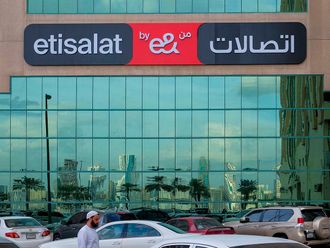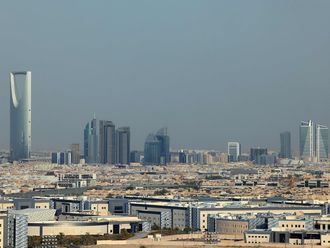Shares in India are pausing for breath after a pulsating rally to record highs and market pundits say smart investors should use the break to accumulate stocks in anticipation of rich dividends when the bulls return afresh.
Domestic mutual funds are rolling in cash as a greater share of individual savings is being diverted to market-focused investment managers, thanks to better equity returns in an expanding economy and falling interest rates that have diminished the lure of bank term deposits.
“Abundant liquidity has been a key driver behind the markets rally and this situation should hold good for the foreseeable future,” equity strategist V. Venugopal said. “The correction is an opportunity for those who missed the rally to jump onto the bandwagon.”
The 50-share Nifty, which is benchmarked by many foreign and domestic funds for asset allocation, snapped a run of five-weekly gains — its longest rising streak since 2014 — and ended down 0.8 per cent over the five trading days to Friday. Still, at the week’s close of 9,588.05, the broad-based index is up 3.3 per cent since May 5.
The benchmark hit a record 9,709.30 on June 6, and technical analysts believe the level would be breached again in the near future.
The top-30 Sensex closed down 0.7 per cent, registering its second successive weekly loss, at 31,056.40. The blue-chip index, used as a barometer of economic health by fund managers, had jumped as much as 18 per cent since the close of 2016 to an all-time high of 31,430.32 on June 6.
Enough steam
Some analysts have been voicing concern about valuations, meaning stocks are expensive based on the price-to-earnings ratio used commonly by market players. However, seasoned pundits such as famed US investor Warren Buffett use other ratios to reflect valuation more aptly.
The Oracle of Omaha prefers market capitalisation to gross domestic product, which he believes is probably the best single measure of where valuations stand at any given moment. By that reckoning, the total value of Indian equities is close to $2 trillion, or about 95 per cent of the country’s GDP. In comparison, it climbed as high as 122 per cent in 2010, and stood at a whopping 170 per cent in 2007.
“We’re definitely not over the top,” Raamdeo Agrawal, joint managing director of Motilal Oswal Financial Services Ltd, told Bloomberg. “The ratio is way below where it was during the 2007 peak.”
India’s economy, Asia’s third largest after China and Japan, is expanding at more than seven per cent annually, and policymakers are aiming to push the growth rate to near eight per cent in the coming years. Sales of nearly everything — from cars and motorcycles to home appliances and houses — are picking up, indicating robust domestic spending.
Private-sector investment is still lukewarm, but as excess capacities are fully utilised to meet rising demand, it is just a matter of time for companies to start building new factories. Heavy government spending on infrastructure such as road and rail networks, airports, ports, power, smart cities as well as cutting red tape should help ease of doing business and pave the way to build more efficient manufacturing facilities.
Falling inflation
Consumer prices have been on a downward trajectory, led by cooling food costs and record harvests. Data released on Monday showed that the consumer price index — a crucial benchmark used by the central bank to determine its monetary policy — slid to 2.18 per cent in May, the lowest in at least five years.
It was below the forecast of most economists as well as April’s 2.99 per cent, and off the Reserve Bank of India’s midterm target of four per cent for the past seven months.
The data should pile pressure on the central bank to lower interest rates. On June 7, the RBI had kept its main repo rate unchanged at 6.25 per cent, and stuck with its “neutral” stance. It disappointed market analysts and economists who had expected a change in the language to “accommodative” that would have indicated brighter prospects for a rate cut.
The RBI’s rigid stand also did not go down well with the government mandarins in New Delhi who have been pushing for easier policy to help revive investment and bolster flagging growth.
The central bank, however, pared its inflation forecast to between 2 and 3.5 per cent for the first half of 2017-18, down from a previous 4.5 per cent estimate, leaving the door open for a possible rate cut. It also lowered its prediction for October-March to 3.5-4.5 per cent, from 5 per cent earlier.
The scope for “future responsible easing has boosted both bonds and equity markets, and should be constructive for portfolio inflows, which should keep pressure on the rupee to appreciate,” Deutsche Bank analysts led by Sameer Goel and Swapnil Kalbande wrote in a report. The RBI’s next monetary policy meeting is in early August.
On the other hand the Federal Reserve decision to raise US interest rates and its hawkish tone should pose a challenge to foreign flows to emerging markets, including India. But cash-flush domestic funds are more than capable to step into any void. On Thursday, foreign funds sold shares worth Rs. 6.45 billion but this was more than offset by local funds who scooped up shares for Rs. 8.55 billion.
Pharma blues
One of the few sectors that have been a laggard in the bull run are drugmakers, primarily due to strictures from the US Food and Drug Administration against manufacturing facilities. For Indian pharmaceutical companies, the US market is a gold mine for generic medicines. Companies regularly watch for products coming off patents and file applications for exclusive rights.
Quality concerns at manufacturing facilities are being addressed by Indian companies and should help them regain their markets, according to Anand Radhakrishnan, a fund manager at Franklin Templeton Investments, who believes the beaten-down stocks are good bets.
“One by one, pharma companies are clearing the manufacturing problems and valuations have definitely corrected,” Radhakrishnan told Bloomberg.
In May, the Franklin India Prima Plus added to its holdings of drugmakers including Sun Pharmaceutical Industries Ltd and Dr. Reddy’s Laboratories Ltd, the news agency reported, adding that the sector accounted for 8.3 per cent of the fund’s Rs. 111 billion assets as of May 31, the highest exposure after banks.
The writer is a journalist based in India.












